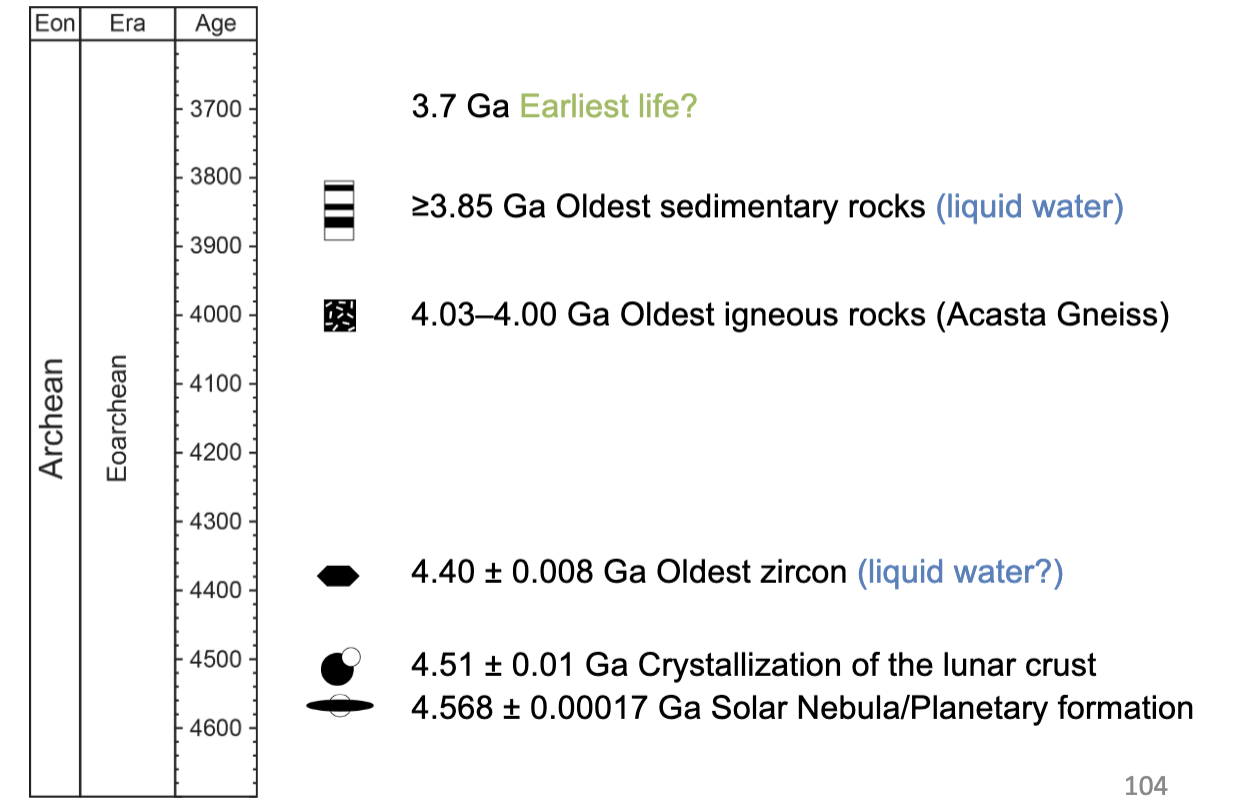UCSB Earth 2 Midterm L 1-3
1/26
There's no tags or description
Looks like no tags are added yet.
Name | Mastery | Learn | Test | Matching | Spaced |
|---|
No study sessions yet.
27 Terms
Layers of the Earth + their charateristics
1)Crust (least dense): thin outer layer, solid, silicate, thickness depends on crust (oceanic or continental)
2)Mantle (denser): mostly solid, silicate, responsible for tectonic activity
3) Core (most dense): innermost layer, (Fe-Ni alloy) iron & nickel, inner core is solid, outer core is liquid
Lithosphere vs. Asthenosphere
lithosphere: is crust & part of uppermost mantle, strong= bends or breaks, forms tectonic plates
asthenosphere: layer beneath the lithosphere, in the mantle, composed of semi-fluid rock that can flow and convect due to heat.
Continental crust vs. Oceanic crust
Continental crust: varies in thickness and composition of rock type and lower density
Oceanic crust: thinner and composed of gabbro and basalts and higher density
Using seismic waves to study Earth structure
Study of seismic waves that reflect off of Earth boundaries with different material, can infer their properties and composition (if liquid or solid).
Isotopes
Atoms of an element with the same number of protons, but varying numbers of neutrons)
Ex: Carbon
Elements
substances that cannot be broken down into simpler substances and consist of atoms with specific numbers of protons.
States of matter
Solid: collection of strongly connected atoms, retain constant volume & shape over long periods of time
Liquid: collection of weakly connected atoms, will flow to assume the shape of a container, but maintain a constant volume
Gas: collection of atoms in constant random motion, will expand to fill any volume
Big Bang Timeline
1) 13. 8 Ga = orgin of time & the Universe
2) at first only energy, no matter
3) first few secs: protons (hydro. nuclei) and electrons
4) first few mins: other small atomic numcei form (He, Li, Be, B)
5) 5 mins: all mater in the Universe had formed
Nucleosynthesis
The process by which new atomic nuclei are created through nuclear reactions, primarily occurring in stars during their lifecycles.
Star formation
After the Big Bang, clouds of H and He formed —> Gravitational collapse led to hot ball of gas —> High pressures and temperatures in the core of collapsing clouds led to fusion reactions and star ignition (~100 Ma after the big bang).
The Solar Nebula
a giant cloud of gas (helium and hydrogen) and dust from which the solar system formed, leading to the creation of the Sun and planets.
Stages of solar system formation
1) Started as a cloud of gas, molecules, and particles (nebula)
2) Gravitational attraction led to formation of a spinning accretionary disk
3)Gravitational collapse led to formation of a proto-star, a dense, hot ball of gas
at the center of the accretionary disk.
4) Once high enough pressures and temperatures were reached the sun ignited
5)Planets formed by attraction and collision of particles within the protoplanetary disk.
Core & moon formation
Core:
1)Larger planetesimals heat up due to impacts, compaction, and radioactive decay.
2) Internal melting led to denser Iron-alloy sinking into the core.
Moon:
1) Formed from the debris of a Mars-sized body impact with Earth.
2) Resulting material coalesced into the Moon.
Types of meteorite and their orgin
1) Iron meteorite: the remnants of these protoplanets’ iron cores
2) Chondrite meteorite: remnants of a core-mantle boundary in some long-gone protoplanet, recent evidence suggests they formed as a result of the core + rocky layers of the protoplanet getting mixed up together on impact
3) Pallasite meteorite: date back to the very early stages of accretion, and never found a home, until they landed on Earth (or other planets)
Radioactive decay
The process by which an unstable radioactive parent isotope decays to a radiogenic daughter isotope
Geochronology
The science of dating geological materials and events using methods like radiometric dating to determine their age.
Timeline of early Earth

Wegner’s evidence for continental drift
1)The fit of the continents
2)The distribution of climate belts
3) Distribution of Fossils
4) Matching geological units and mountain belts
Magnetic inclination
Magnetic field lines are parallel to the surface at the equator
Magnetic declination
the angle between the line of longitude at a given location
True polar wander
the magnetic poles wander around through time, but mostly stay near the poles
Polarity reversals
Events in Earth's history when the magnetic field changes direction, causing the magnetic north and south poles to switch places.
Paleomagnetic evidence for continental drift & seafloor spreading
1C) A mismatch between magnetic north & geographic north (North pole)
2S) The sinking of the Titanic
3S) German U-Boat
Evidence for plate tectonics from seafloor mapping & the distribution of earthquakes
1) Seafloor spreading at ridges creates new crust
2) Earthquakes trace the movement and interaction of plates.
Theory of plate tectonics
Earth’s lithosphere is broken into more than a dozen plates that move relative to each other at rates of ~1-15 cm/yr. They range in size from very large (e.g. the Pacific) to very small (the Juan de Fuca Plate). As plates move, so do the continents
Driving forces of plate tectonics
plate motion is driven by a combination of ridge push and slab pull
Pangea
the fit of all continents